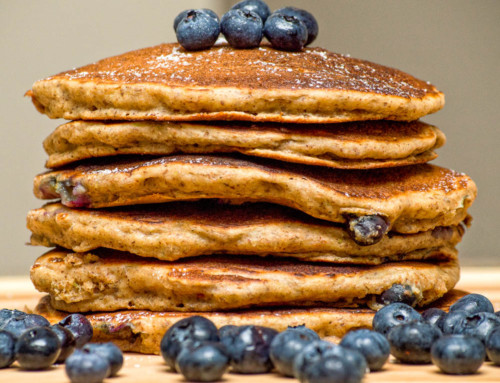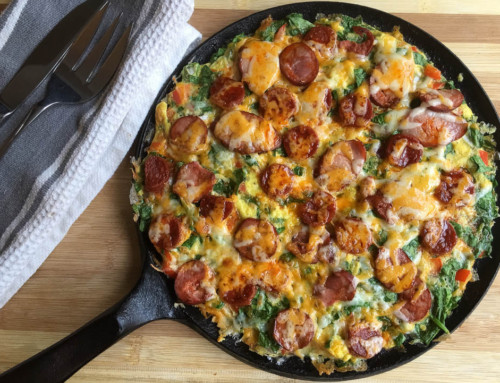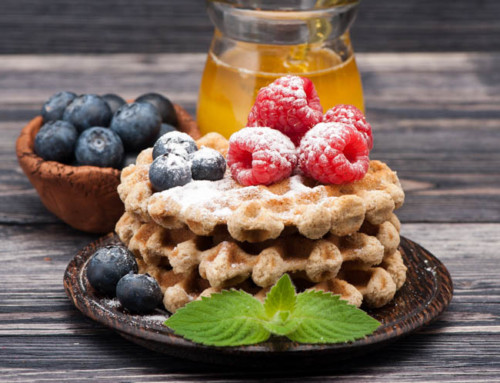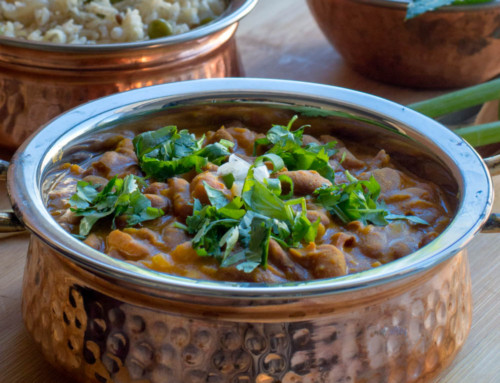While researching the topic of kale vs. spinach benefits, it seems that most popular posts focus on nutrient value of each food. Popular blogs make a list of which food has more vitamins, minerals, fiber, protein, calories (counting calories in greens—hmmm), and so on.
At Science and Strength we do things a little different, our focus and lifestyle diet involves eating a variety of foods—as per our physiological design. Each whole food, even if they are both green will have slightly different nutrient values. As a result, we should maximize on this variety rather then use it as an elimination tactic.
Science tells us, kale is “higher” in protein, calcium, vitamins C and A; and spinach is “higher” in minerals iron and magnesium.
Does a slight difference in nutrient value, calculated in a test tube really makes one type of food better than the another? And, should we focus predominantly on numbers to dictate our food choices?
The answer is No!
Bottom line, both greens are good for us, as they are full of vitamins, minerals, anti-oxidants and phytochemicals. So, instead of focusing on which weights slightly higher on the superfoods scale, this article will focus on quick and easy ways to maximize the benefits of BOTH greens.
Related article:
Metabolic Response of SUPERFOODS: a word of CAUTION
Antioxidants in Superfoods – What’s so special about Blueberries?
Kale vs. Spinach — Taste and Palatability
Although both greens look similar and fall under the larger “superfood greens” umbrella, kale and spinach belong to different families.
- Kale belongs to the Brassica family which includes cabbage, broccoli, Brussels sprouts and cauliflower. Its sister plant collard greens are used heavily in southern cuisine and mustard greens make up the popular Indian dish – Sarson ka Saag (classic dish of the punjab, served alongside corn roti).
- Spinach belongs to the Chenopod family which includes beets, swiss chard and quinoa. Fully grown spinach variety is used to make the popular Indian dish palak paneer (delicious dish—one of Dupi’s favourites [recipe coming soon]).
Just as beets and broccoli are different foods, cooked and eaten for their difference in taste and nutrient value, so should kale and spinach.
Spinach
Most of us in the West are familiar with baby spinach, a modern phenomenon; which has the mildest taste compared to its older varieties.
Spinach varieties:
- ‘Savoy’ variety has dark green, crinkly and curly leaves. It is often sold in North American supermarkets as fresh bunches. These are best to cook with due to their slight bitter favour.
- Flat- or smooth-leaf spinach has broad, smooth leaves that are easier to clean than ‘Savoy’. This type is often grown for canned and frozen spinach, as well as soups, baby foods, and processed foods.
- The Baby version of this spinach is what most of us are familiar with. It comes packaged in bags, often washed and ready to eat. It’s also crispy and coarse, like the regular counterpart but is more sweeter and tender with small edible stems.
- Semi-savoy is a hybrid variety with slightly crinkled leaves. It has the same texture as ‘Savoy’ but it is not as difficult to clean.
Kale
Compared to spinach, kale has an earthy flavour along with dry and crunchy texture. Due to this distinction, kale is often served as a cooked dish to soften its structure while making it more palatable. However, in raw form, kale’s raw nutrient content can be maximized when added to green smoothies alongside fruits that mask its unique flavour (more about this little later).
Kale varieties:
- Curley Kale – the most common type found in North American domestic grocery stores. It has a sweet and mild flavour.
- Lacinato Kale – second most likely type to be found in grocery stores, has tall narrow leaves and a wrinkled texture, that continues to grow into the winter season.
- Ornamental styles – Redbor kale and Kamome red kale – both types bare beautiful colours varying from dark red-leaved variety to more of a flower look. These varieties are often used as an ornamental plant and second as a food crop due to their bitter taste.
Maximize on taste and palatability:
As for taste, when given the choice between kale and spinach most of us will prefer pizza but, if we must choose popular option are: spinach in the raw form and kale in the cooked.
Ease of Preparation – cooking methods
Baby spinach comes cleaned and packed in a bag for your salad and/or smoothie blend. This convenience already puts spinach ahead of the game as whole kale often needs to be washed and cut. However, if you are not rushed for time, a quick rise and chop is all you need to enjoy the wonderful benefits of kale.
Below are some tips and tricks to make adding these superfoods into your diet a little easier. All mentioned recipes below are in progress and will be posted soon—stay connected with us to be notified.
Breakfast
- Add some baby Spinach to a quick egg scramble, or a weekend quiche dish.
- Toss some chopped Kale to leftover roast potatoes, some frozen corn and peas; to make a quick healthy, filling and fiber-rich hash.
Green Smoothie Snack
- Firstly, if you are new to greens start by adding baby spinach, some fruits and nuts to a yogurt based smoothie. Taste of baby spinach is easily masked by other added flavours.
- Secondly, work your way up to kale. A trick to making a kale smoothie taste good and fresh is cilantro and some strong tasting tropical fruit. Water based smoothie, add some chopped kale, few stalks of cilantro and a few pieces of tropical fruit like pineapple or mango.
Lunch
- Raw spinach salad topped with diced fruits, vegetables and legumes is an excellent vegetarian option. Dress the salad with a homemade vinaigrette dressing.
Dinner
- Fresh spinach works well with mild favour dishes like pasta, rice and quinoa. Toss some spinach leaves last minute to the cooked dish for some added green benefits, just warm through.
- Kale works best when cooked as part of a dish. Add some chopped kale to a soup of your choice—vegetable base soups compliment kale well. You can also toss some chopped kale to your roast veggie bake—yams, potatoes and kale with some EVOO, salt and pepper. Warm kale salad with some lean meats is another applicable option.
Hidden Pitfalls — dressings, dips and chips
One of the biggest mistakes people make when adding these superfoods to a diet is in form of treat foods.
Be cautious of:
Spinach dip – added empty calories from the mayonnaise and sour cream are unnecessary and cannot be justified by tiny amount of spinach content.
Kale Chips – if nutrition is a priority for you, turn away every time you hear the word ‘chip’. This food option is often highly processed, loaded with salt and preservatives. Even homemade kale chips are denatured through baking process and loaded with salt.
Salad Dressings – most pre-made spinach and kale salads come with a side of dressing package. These dressings contain copious amounts of sugar in order to increase the overall product taste. One of our last minute grab and go salads is the popular superfoods salad, consisting of kale, broccoli and other fibrous greens. But, it also comes with dressing, craisons (sweet, dried cranberries) and seeds. If you ever eat this salad dressing and craisons on their own you’ll noticed how overtly sweet they are. Grocery stores try to make healthy food palatable by adding extra sugar, salt and fat. Avoid this trap by making your own dressing for a superfoods bagged salad. Try some thinned out vanilla yogurt or EVOO/balsamic homemade dressing. Homemade vinaigrettes and dressings are far healthier options maximizing nutrient benefits without additional empty calories.
Final Thoughts
Taste and Ease of preparation are two main factors that lead towards sustainable lifestyle changes. Kale and spinach are the easiest healthy foods to add to your already staple dishes. Don’t fall for the trap of eating foods based on comparison statistics of one type of food being slightly better than another.
Both Kale and Spinach are prominent nutritional packed foods that worth adding to your diet. Choosing one over the other is a disservice to your overall goals of healthy lifestyle.
As always, if you liked this post feel free to share with others; and leave us a comment with your thoughts on the topic. Cheers!
BTW – you may also be interested in learning more about our:






